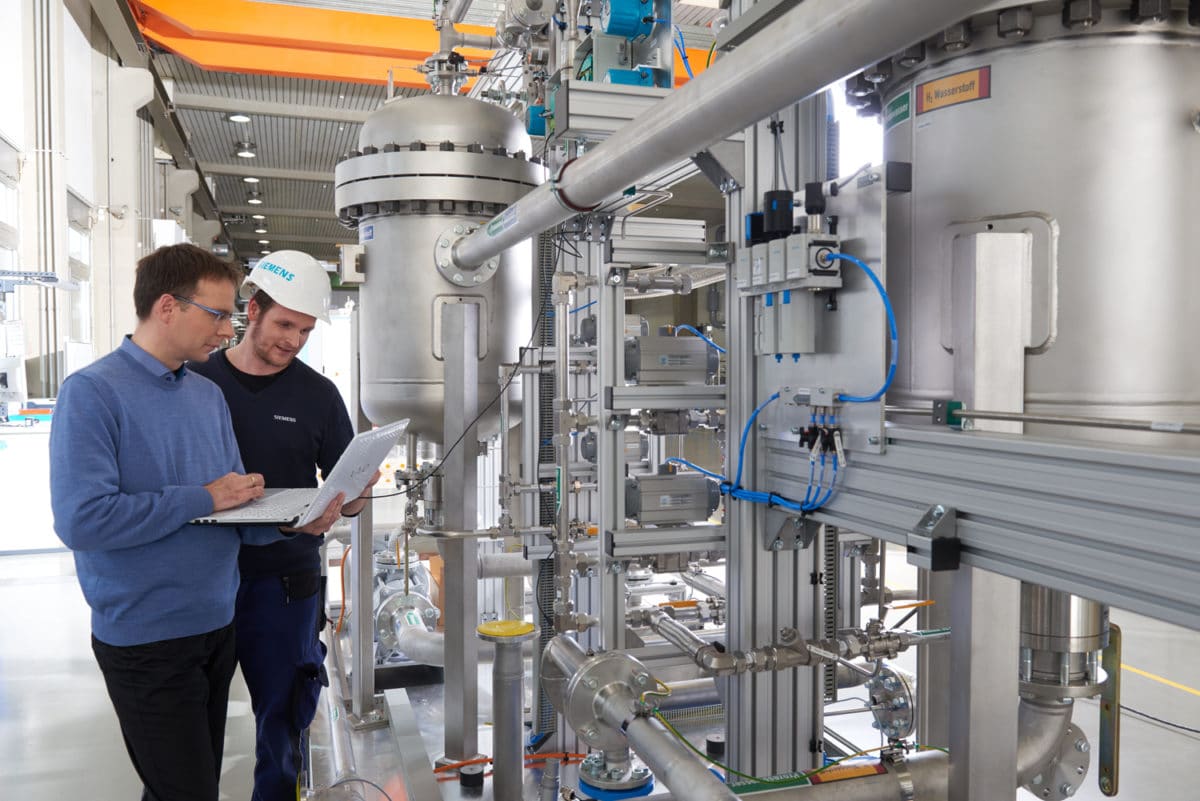Australia has embraced the potential of green hydrogen, with 38 GW (AC) of assets already announced. But new analysis from independent consultancy Rystad Energy shows that capital expenditure costs need to be slashed by 75% for green hydrogen to be cost-competitive with fossil-fuel alternatives.
The Australian government has committed to green hydrogen – generated by renewables-powered electrolysis – as a fuel for the future. It formally recognizes it as a “priority technology” in the Technology Investment Roadmap announced late last year.
The government reaffirmed its commitment to hydrogen at the recent G7 Plus Summit in England by signing new partnerships with both Germany and Japan to support hydrogen initiatives. It has set an economic “stretch goal” to produce green hydrogen for $2 per kilogram. At that price, green hydrogen is expected to be cost-competitive in a range of applications.
However, Rystad Energy Senior Analyst David Dixon has declared the $2p/kg target as a real challenge. A detailed examination of cost factors in Australia shows that green hydrogen will struggle in the foreseeable future to be cost-competitive with gas produced using fossil fuels, he said.
Last week, Dixon released details of a year-long investigation into the levelized cost of hydrogen (LCOH) in Australia. The analysis, based on a 100 MWh electrolyzer facility powered by current solar PV and wind technology, included more than 2,400 simulations for every state investigated. It took into account the AC capacity of the solar and wind assets, and the capex and opex of all elements in the equation. The investigation identified electricity costs, electrolyzer capex and opex as the key components of the LCOH.
“Our numbers suggest you need to reduce the capex of the total system, that is the electrolyser, the PV and the wind by 75% as well as improve the capacity factor in order to get to the government target of $2p/kg of hydrogen,” Dixon said.
Dixon said the required cost decline for hydrogen electrolyzers is foreseeable as they start to get built at scale. But he warned that achieving similar reductions for PV and wind will be a real challenge with electricity, which makes up the bulk of the LCOH.
“The wind and PV costs have to come down by over 50% and this is a very, very big challenge in a mature industry,” he said. “And in the short term, we’re actually predicting costs of key equipment to go up as commodity prices rise, not go down, so $3 is foreseeable and $2 is very, very challenging.”
The report shows gains in electrolyzer efficiency, including firming during periods of low demand on the grid, would also be critical in reducing costs. But Dixon said that even with the foreseeable reductions, the LCOH would still be above the $2p/kg target.
“If the capex of electrolyzers reduces 60%, we can knock off a $1, if we build utility PV and wind at a scale and thus benefit from the economies of scale, you knock off about 50 cents and if you firm between off-peak hours you can reduce that further but it still only takes you to $3p/kg,” he said. “There has to be a shift or subsidy even at scale in order to displace the existing production of hydrogen from steam methane reforming.”
While costs remain a hurdle for the industry, the Australian government remains committed to hydrogen, signing a new accord with Germany. Included in the initiatives is the establishment of the German-Australia Hydrogen Innovation and Technology Incubator (HyGATE), with both countries to commit funding to support pilots and research projects along the hydrogen supply chain. The new accord will also see the two countries exploring options to facilitate the trade of hydrogen and its derivatives produced from renewables from Australia to Germany.
In addition, Australia has announced a new agreement with Japan to jointly support initiatives that will help drive transitions to net zero emissions, with a focus on clean technology such as hydrogen. Prime Minister Scott Morrison said international collaboration focused on technological innovation will be key to getting new energy technologies like hydrogen to commercial parity.
“Our ambition is to produce the cheapest clean hydrogen in the world, which will transform transport, mining, resources and manufacturing at home and overseas,” he said. “We have a mix of all the key ingredients needed to be a major global player in a thriving global clean hydrogen industry – abundant land and energy resources coupled with an excellent track record and reputation as reliable energy partner.”
This content is protected by copyright and may not be reused. If you want to cooperate with us and would like to reuse some of our content, please contact: editors@pv-magazine.com.




1 comment
By submitting this form you agree to pv magazine using your data for the purposes of publishing your comment.
Your personal data will only be disclosed or otherwise transmitted to third parties for the purposes of spam filtering or if this is necessary for technical maintenance of the website. Any other transfer to third parties will not take place unless this is justified on the basis of applicable data protection regulations or if pv magazine is legally obliged to do so.
You may revoke this consent at any time with effect for the future, in which case your personal data will be deleted immediately. Otherwise, your data will be deleted if pv magazine has processed your request or the purpose of data storage is fulfilled.
Further information on data privacy can be found in our Data Protection Policy.